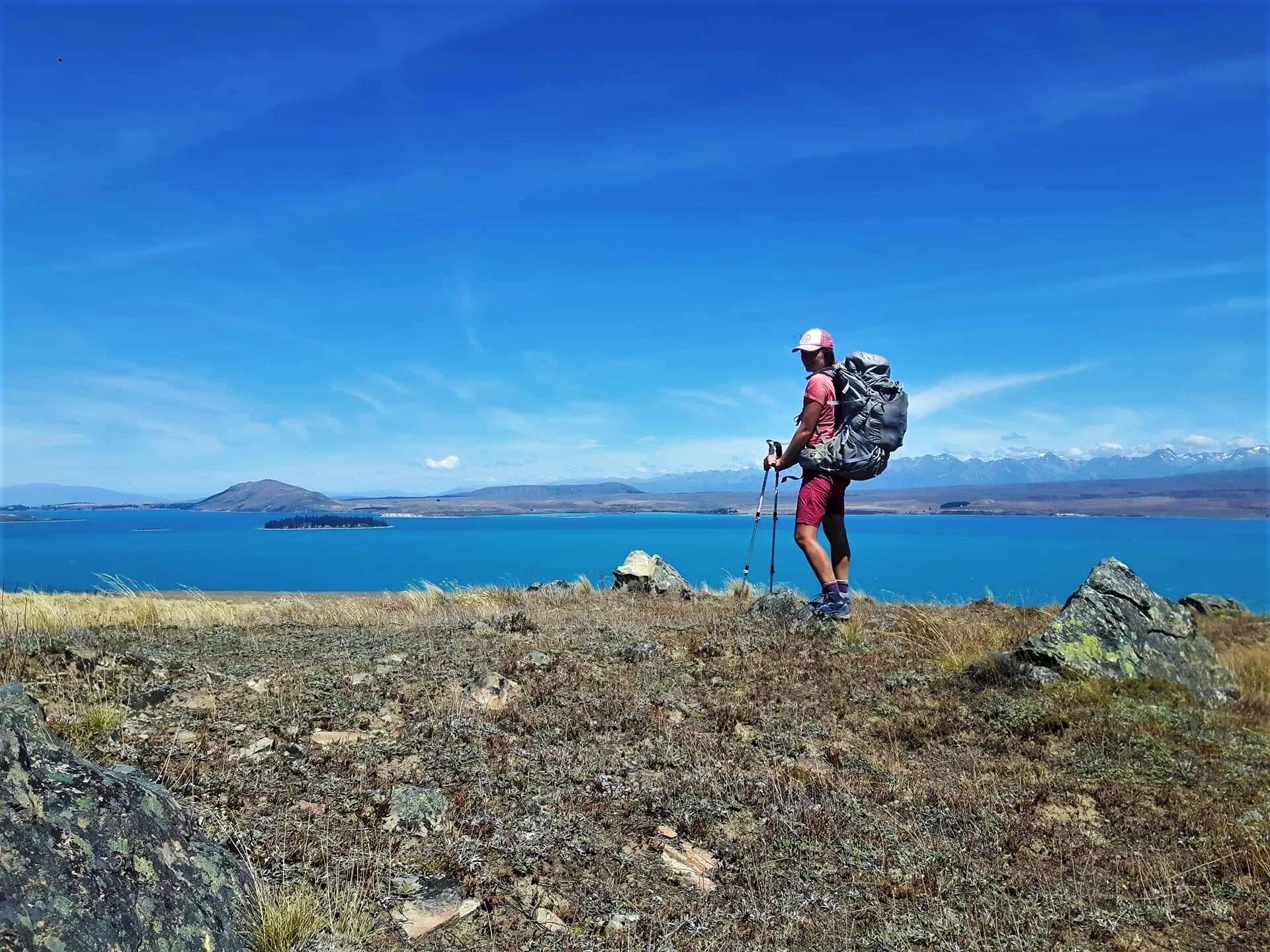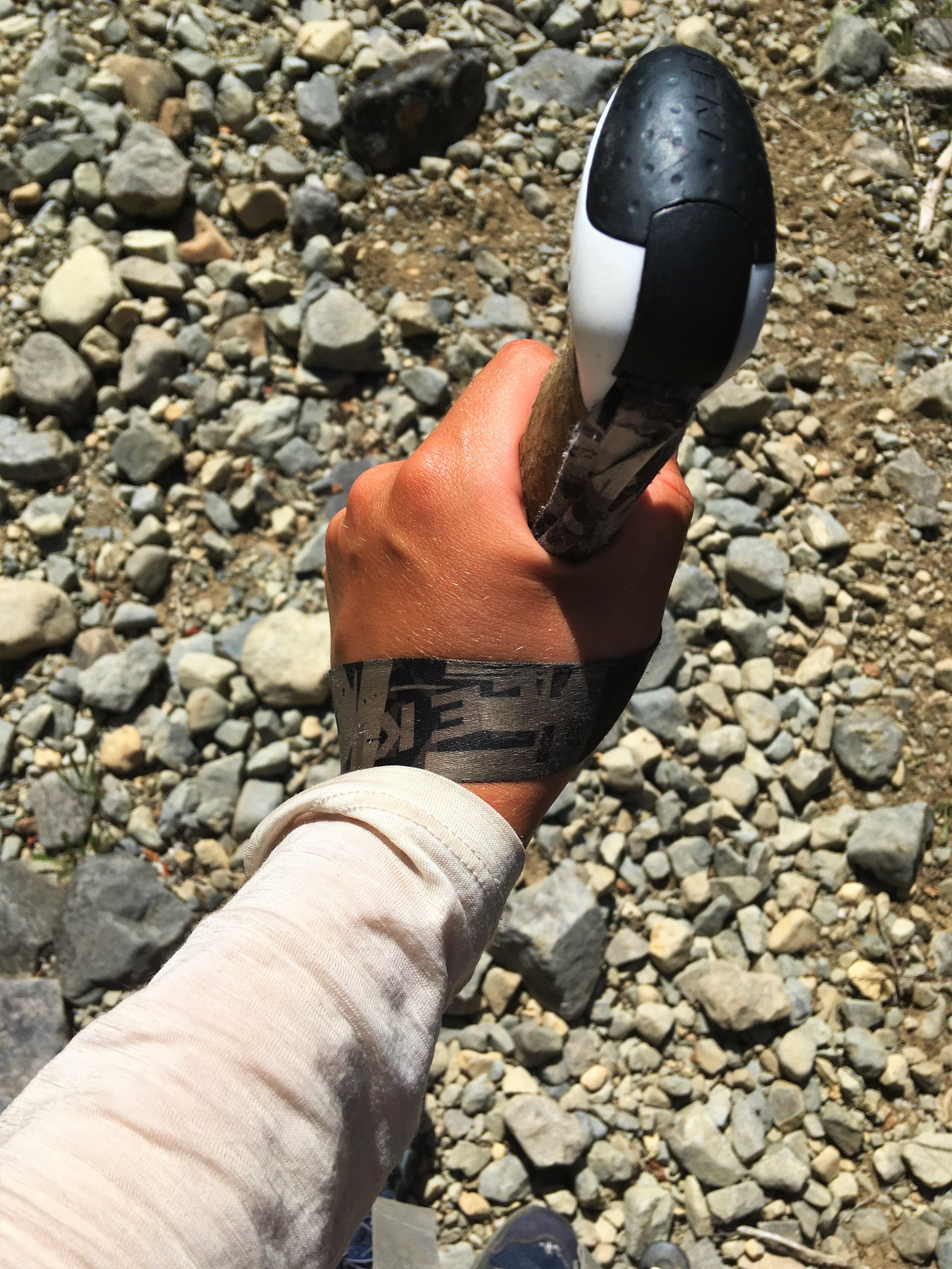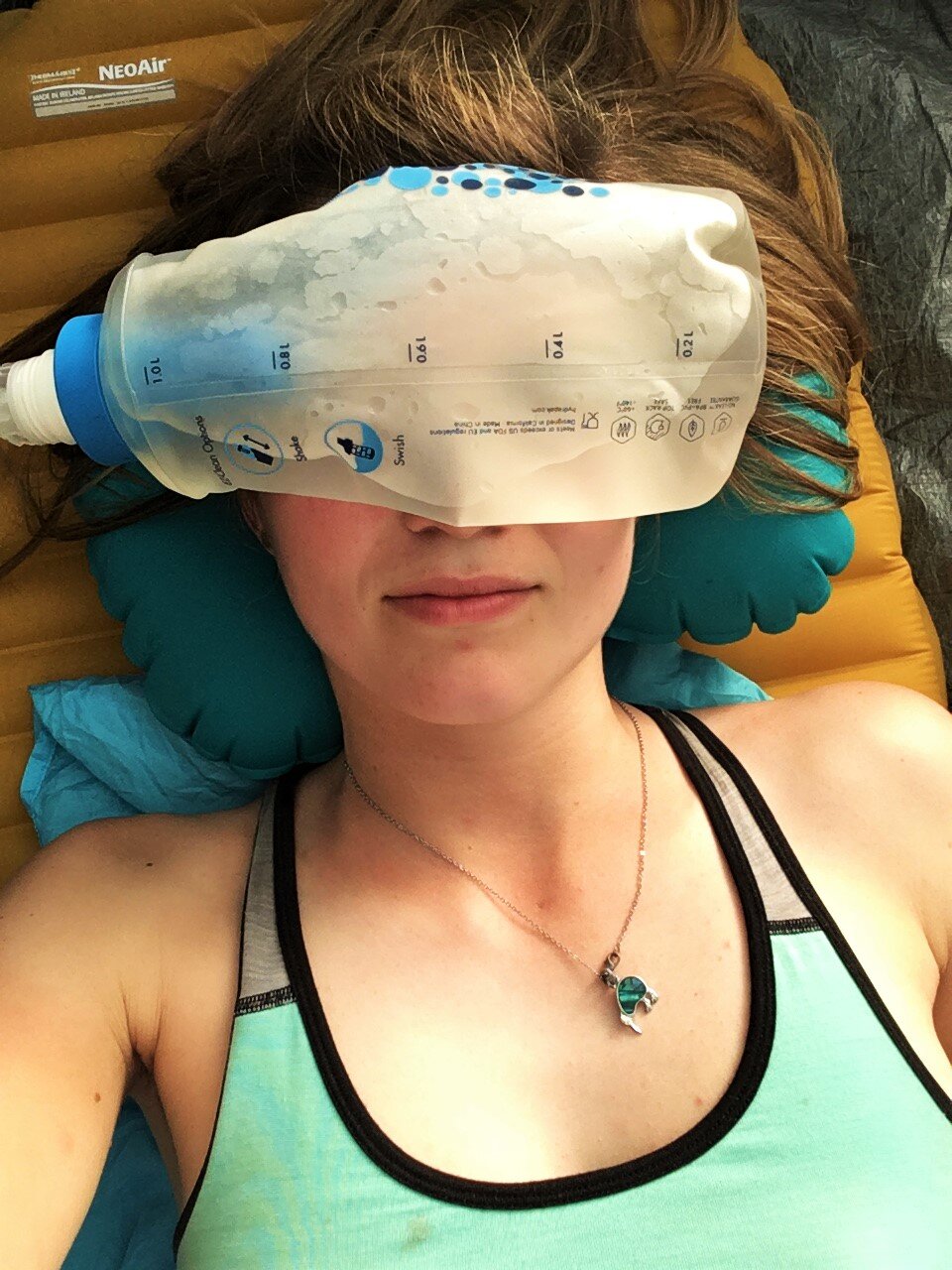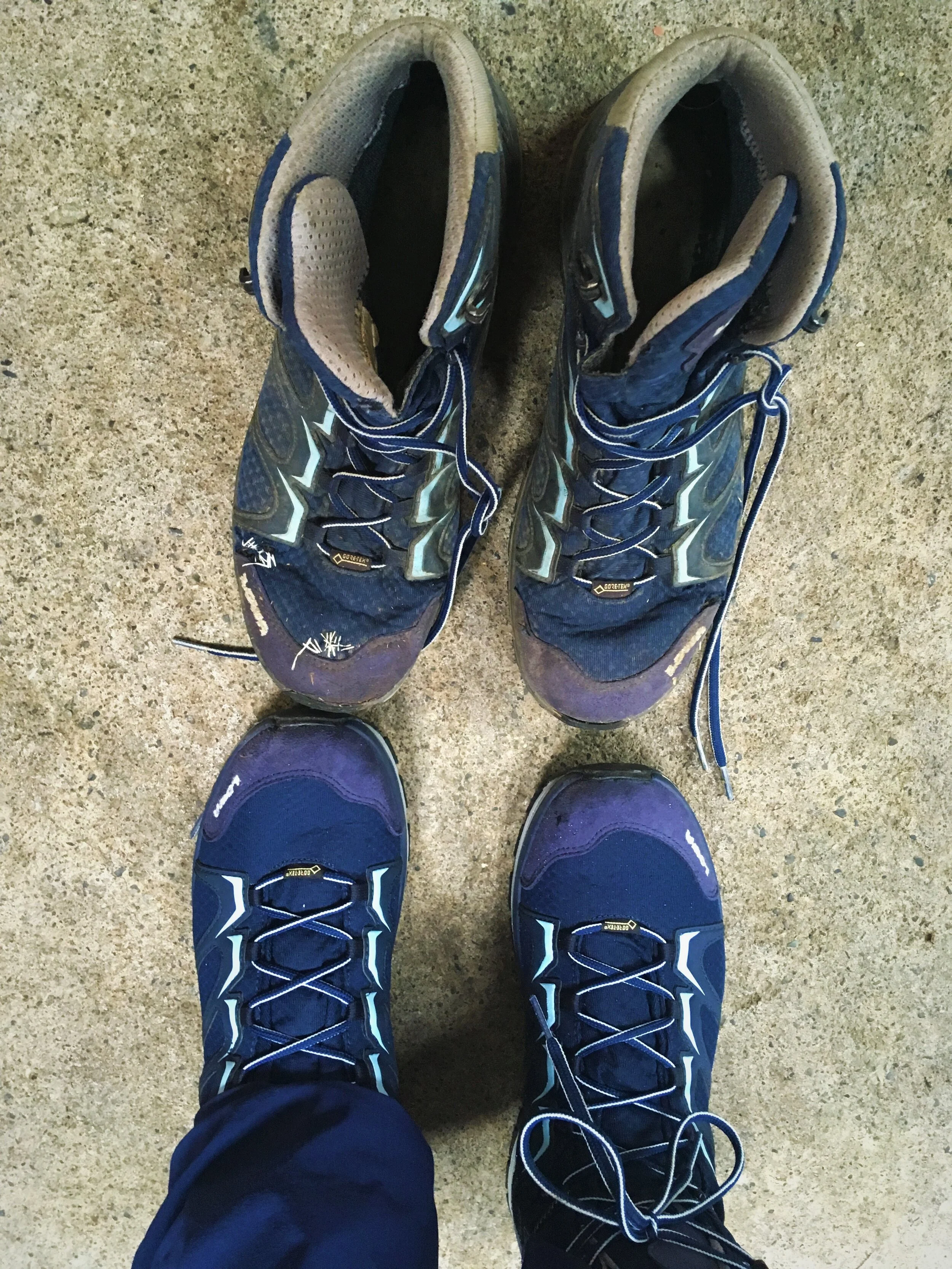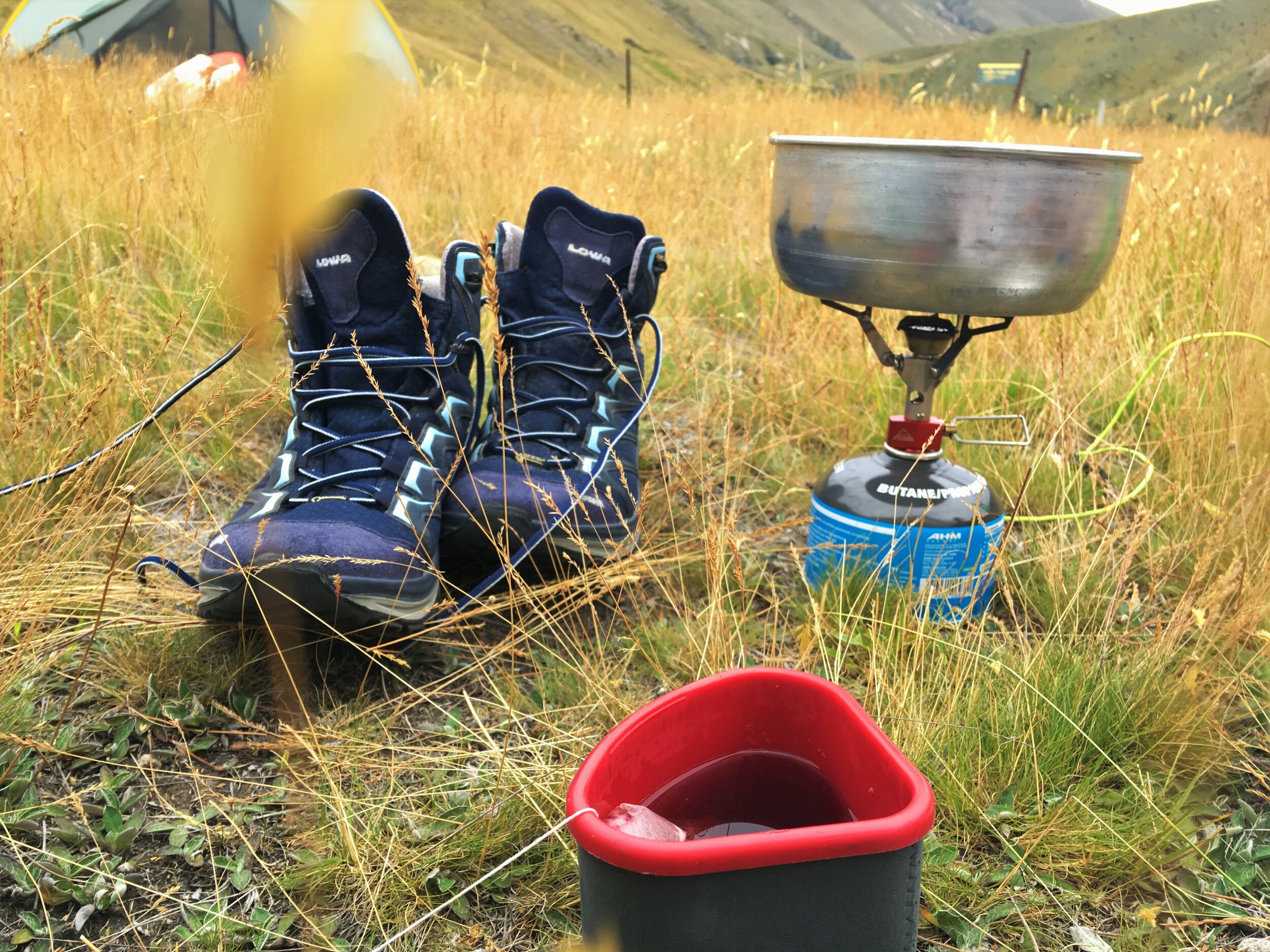Trekking poles:
There were a handful of TA hikers who didn’t use poles. I don’t know how they lived. Trekking poles are an object of much discussion in hiker groups, here in Norway they are typically only used by older people (older as in retired). As a healthy 24 year-old I can honestly say poles are an absolute necessity without which you are complicating your hike considerably, not to mention putting unnecessary strain on your body. In addition, I carry a ZPacks Duplex tent, which needs to be set up with trekking poles.
Trekking poles distribute your weight better, and it can save literally tons of pressure from your knees every day. You get a full body workout – after the TA my arms were among the most muscled parts of my body. Using poles prevents your hands from swelling, they propel you forward so you hike faster. They often save you those dreaded wet feet during river crossings, and in hard terrain they stabilise you and make rock-jumping far easier.
Why would you walk on two legs when you can have four?
My Leki Cressida poles. Comfortable cork grip & silky hand strap, they never broke despite regularly being jammed between rocks. Purchased at Cotswolds Outdoor in London for £50, highly recommended! Unlike Patrick’s Black Diamond poles that lost their tips, my Cressidas look almost unused after 3000+ km. Probably my favourite gear item of all time!
Katadyn Be Free water filter
Yet another contested item, water filters are sources of much frustration amongst hikers. Most would agree that filtering water is probably the most boring camp chore, and who hasn’t found themselves cursing over that flow just growing ever slower until you just wanna toss the damn thing in the river?
I tried the Sawyer Mini filter on the JMT, a review of which can be found here (link). For the TA, I had the Katadyn Be Free 1L (and the 0.6L after I lost the first one… ops), and I gotta say: this filter was the object of much envy. On the TA there is usually plenty of water, so you don’t have to worry about the filter’s small size. Also, you can just use the bladder to fill up additional bottles. Unlike most other filters, this one never clogged. It was super easy to clean and allowed you to fill directly from streams on the go. No more stopping to get out that gravity filter, or squeeze until your veins burst on cold mornings. Other hikers frequently asked to borrow my filter when their own copped out.
The only potential downside to this filter is that the bladder may puncture. I treated mine with care and never squeezed it forcefully, so if you go gentle it should not be a problem.
Doubles as a very handy cooling agent
Lowa Innox GTX Mid W boots
If they ever stop producing these boots, I will be dead meat. After 3000+ km in these darlings, I can count the blisters they caused me on one hand. After my disastrous boot pick on the West Highland Way, I was determined to go with more flexible footwear, and the Lowas are a dream.
The Innox are fastpacking boots, aka they are made for fast hiking in relatively forgiving terrain - but were great on both the JMT, GR20 and TA. They are made of soft, flexible and lightweight material, and don’t need any breaking-in time. My weak-as-noodles ankles get all the support they need, and my feet never once overheated despite the GTX lining. In fact, these boots dried out faster than my trail runners, and defied most criticism against boots you will ever hear.
When combined with my dearly bellowed sock combination of Injinji liners & Darn Tough Micro Crew Cushion, they are as close to blister proof as you can get. If you prefer wide toeboxes, you might find the Innox a little too narrow, but they fit my swollen feet just fine. Whenever I developed sore spots on my arches, I simply used another lacing technique – and problem solved. I have flat feet and use pretty bulky handmade orthotic insoles, so I scaled up 1,5 size from my normal shoes. The Innox also have great traction on all kinds of surfaces. I recommend them every chance I get!
Downsides: That Gore-Tex stamp was probably applied a little too liberally. After your second toe-slip into the creek, or after a while stomping through that wet morning grass, they will be damp, minimum. These are not waterproof boots. If you are hiking in a day of rain, your feet will be wet. Also, the first pair I used on the JMT were coming apart at the seams, and by the time I replaced them in Arthur’s Pass, they were pretty fit for slaughter. However, the pair I resupplied in AP lasted me the rest of the TA and are still as good as new, so it was perhaps a faulty production of the first pair. Needless to say, they will not be as durable as heavy-duty leather boots.
Old and new boots at Arthur’s Pass
Sleeping Bag Liner
Most nights on the TA I woke up drenched in sweat. I hiked in a record-hot season, and only in the early hours of the morning would it typically be cold enough to use my sleeping bag as a blanket or zip it up around me. I am aware that most hikers don’t carry liners because they are seen as unnecessary weight.
However, there are several benefits to carrying a silk liner like mine from Rab at only 137 grams. It adds a few degrees to your sleeping bag and can significantly prolong your bag’s life. You protect the bag from dirt, and it’s much easier to wash the liner than a down sleeping bag/quilt. Most of the TA I just slept in the liner, and on the JMT it made my too-cold bag warmer.
Due to a couple of unexpected periods, my poor liner now looks like someone was murdered in it. If anyone asks, I say it is a leftover prop from Texas Chainsaw Massacre.

